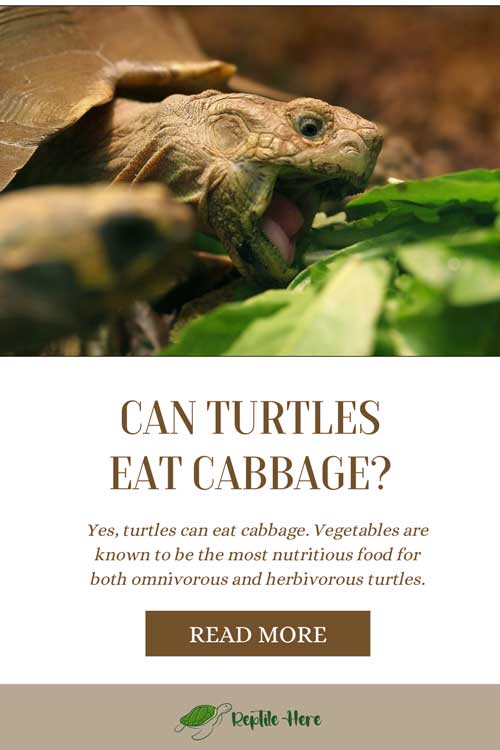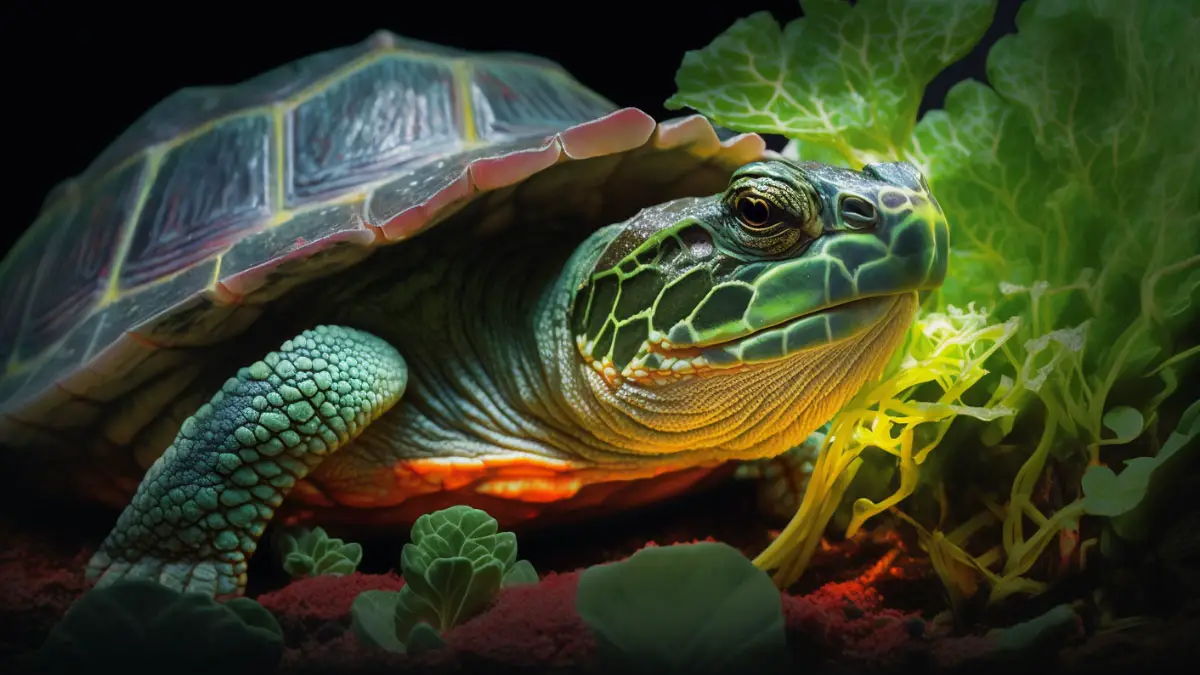Can Turtles Eat Cabbage? Which Species Like Them Most?
Most turtles are omnivorous, meaning they feed on both plants and animals. However, some, like loggerhead sea turtles, are carnivores, while others, like green sea turtles, are strictly herbivores. Some change their feeding habits as they grow, making many pet owners wonder what is safe for pets.
So, can turtles eat cabbage? Yes, turtles can eat cabbage. Vegetables are known to be the most nutritious food for both omnivorous and herbivorous turtles. However, most vegetables, including cabbages, contain phosphorus, which is harmful if consumed in excess. Turtles should be fed cabbage sparingly to get the most of their nutrients while avoiding health conditions like hypothyroidism.
Most turtles are omnivorous and tend to like a similar diet. However, it’s best to know which species like this diet more. Keep reading to understand the conditions for giving your turtles cabbages.
Can You Feed Cabbage To Your Pet Turtles?
Contents
Yes, your pet turtle can eat cabbage. Cabbage is rich in nutrients like folate, vitamin K, C, and calcium. Calcium, for instance, helps turtles to develop stronger bones and shells, while vitamin C helps in fighting infections. 90% of the omnivorous turtle diet should be vegetables, meaning a vegetable diet is the most recommendable to these pets.
The calcium to phosphorus ratio differs in various vegetables. Vegetables with a 1:1 calcium to phosphorus ratio are not suitable for turtles though they are manageable. A 1:2 ratio is dangerous, and vegetables with this ratio should not be fed to turtles. The 2:1 ratio, if ingested sparingly, is considered safe for turtles to consume, and cabbages fall in this category along with watercress and spinach.
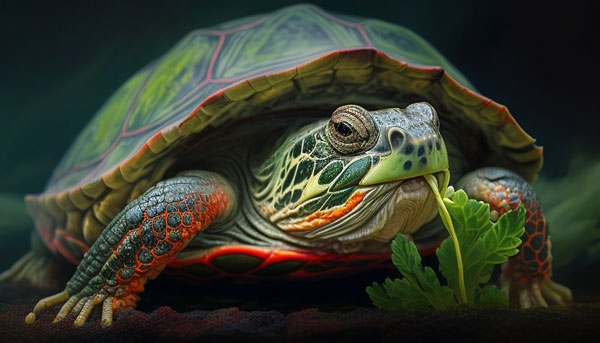
Cabbage is ideal for almost all omnivorous and herbivorous turtle species. Most common are box turtles, red-eared slider turtles, green sea turtles, painted turtles, and hawksbill turtles, among others. These turtles tend to like cabbages more and can benefit from a wide variety of nutrients found in them. Though all the above turtles can feed on cabbage, you should only give them moderately to reduce the risk to various organs like the thyroid and kidney.
Some vegetables contain goitrogens, substances that disrupt the normal making of thyroid hormones. There is a gland called the pituitary gland that releases thyroid-stimulating hormones, which are likely to cause goiter. Cabbage, turnips, kale, and cauliflower fall under this category and should be fed cautiously. It’s also advisable to give these turtles organic cabbages to steer clear of various stomach problems caused by pesticides.
Do Turtles Like Cabbage?
Yes, turtles like cabbage, and red-eared sliders like them most. Various nutrients make cabbage recommendable to these pets, calcium being one of them. However, the quantity given to turtles should be less. Mixing them up with other varieties of vegetables is acceptable.

Health Benefits For Turtles Eating Cabbage
Cabbage is rich in vitamin B6 and folate. These nutrients are essential for the normal functions of the turtles’ nervous system. A turtle shell contains more than 50 bones.
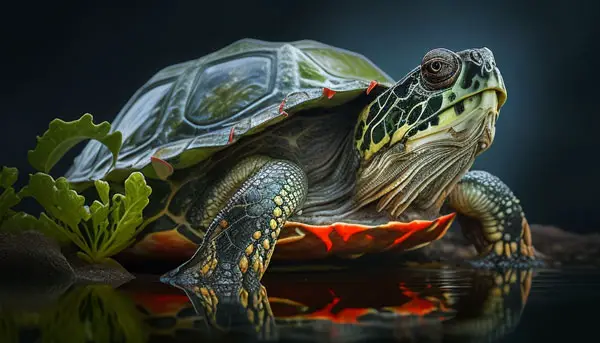
To keep these bones strong and healthy, they need calcium. A significant percentage of the recommended dietary allowance in cabbage is calcium, which is another significant health benefit of cabbage to turtles.
How Many Cabbages Can Turtles Eat?
Turtles should not feed on more than a quarter of a cabbage. This is due to high phosphorus levels in this vegetable that can cause multiple health complications. It’s advisable to blend cabbage with other vegetables with lower phosphorus concentrations like collards and mustard greens.
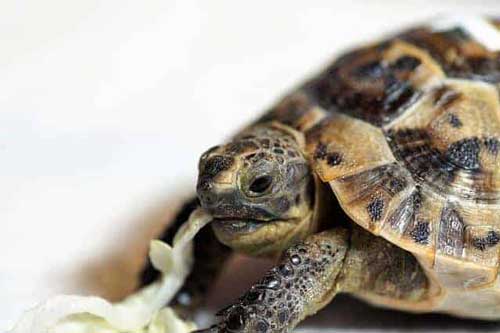
How Do You Prepare Cabbage For Turtles?
Ensure you first clean your cabbage to avoid any pesticides that might be on the outer leaves. Secondly, pluck the outermost leaves of the cabbage and slice them. Avoid the stem while preparing since it is hard and slightly bitter to turtles. The outer leaves are the most nutritious and should be served along with other vegetables that your pet likes.
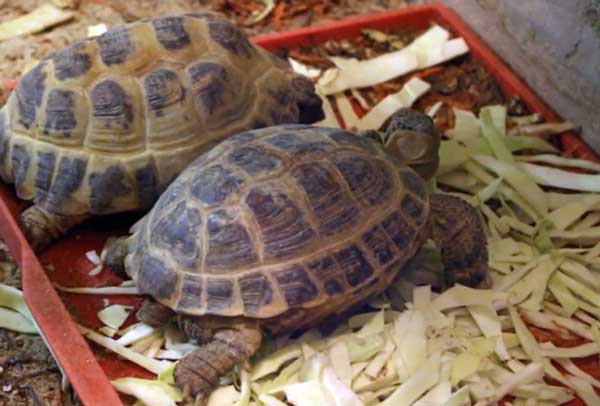
Can You Feed Cabbage To Baby Turtles?
Baby turtles can eat a wide variety of vegetables, cabbage being among them. Since their digestive system is still developing, ensure you give them little amounts of these vegetables. It’s also best to only give them organic cabbage to avoid health problems caused by pesticides.
Video Of A Turtle Eating Cabbage
Frequently Asked Questions (FAQs)
A box turtle can eat cabbages. Calcium to phosphorus ratio of cabbage is safe for these turtles if given mildly. The larger percentage of box turtles’ food should be vegetables since they’re most nutritionally beneficial to them. However, the experts advise pet owners to serve the cabbage diet sparingly and mix it with other fresh veggies.
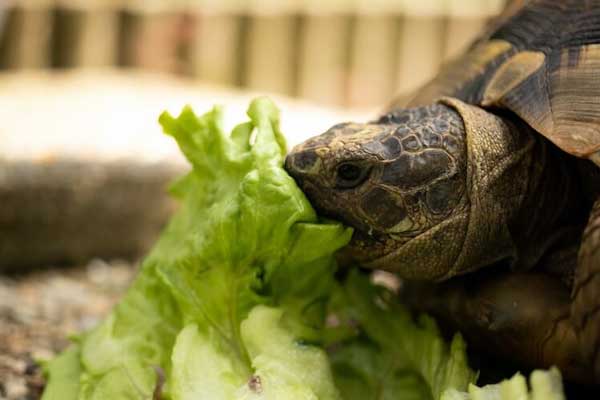
Like most omnivorous turtles, these aquatic pets can eat cabbages. It’s best to serve red-eared slider turtle cabbage while in water, where it feeds more comfortably. Also, ensure you give them the outermost leaves since they are the most nutritious. Avoid feeding them the cabbage stem, as the hardness in it can turn off this pet’s appetite.
Painted turtles can eat cabbages. These shallow water aquatic pets require a variety of nutrients present in this vegetable. However, like most pets, you ought to give them only limited amounts of vegetables to allow them to explore other diets. Since cabbage contains goitrogen compounds, only serve them sparingly to reduce potential health risks.
Outro
Most turtles are omnivorous, which makes their diet almost the same. This counts as an advantage to pet owners who find it hard to decide on what to feed them. It’s also best to always confirm the recommended amount of these foods that are safe for your pet. Remember to explore as well because some foods are discouraged among young turtles.
Vegetables have many nutritional advantages to both humans and animals. Cabbage is among these high-value nutritious foods and helps by providing the much-needed nutrients for good health. Can turtles eat cabbage? Turtles can eat cabbages, though in limited amounts, with the word to notice being ‘limited.’
Do you want to know if turtles eat turkey or cheese? Read our articles about it to learn more.
